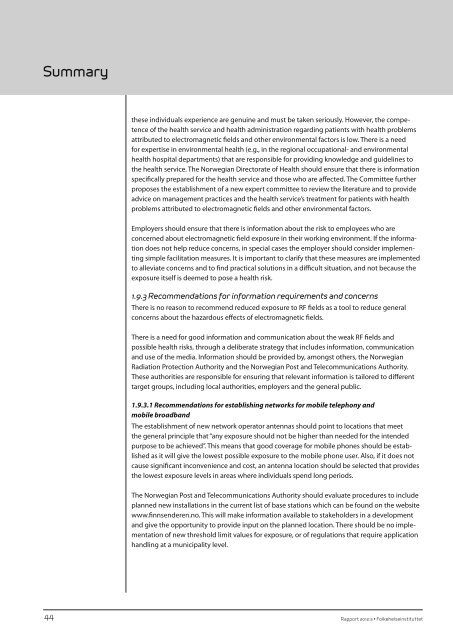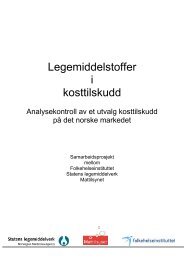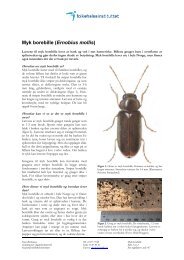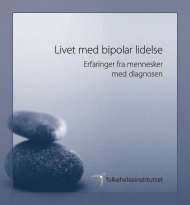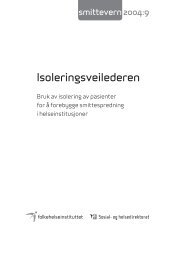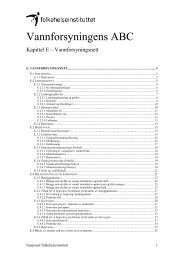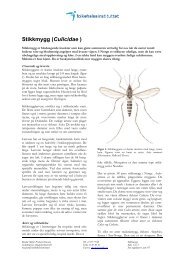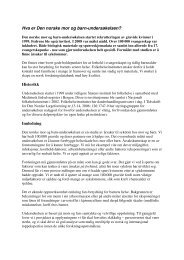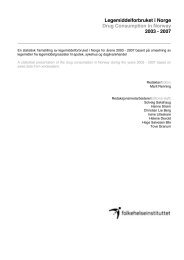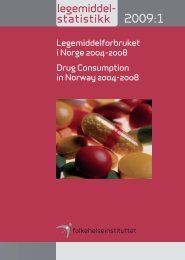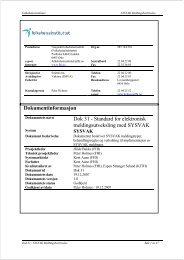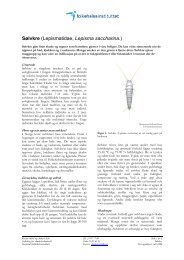rapport 2012:3 - Nasjonalt folkehelseinstitutt
rapport 2012:3 - Nasjonalt folkehelseinstitutt
rapport 2012:3 - Nasjonalt folkehelseinstitutt
Create successful ePaper yourself
Turn your PDF publications into a flip-book with our unique Google optimized e-Paper software.
Summary<br />
these individuals experience are genuine and must be taken seriously. However, the competence<br />
of the health service and health administration regarding patients with health problems<br />
attributed to electromagnetic fields and other environmental factors is low. There is a need<br />
for expertise in environmental health (e.g., in the regional occupational- and environmental<br />
health hospital departments) that are responsible for providing knowledge and guidelines to<br />
the health service. The Norwegian Directorate of Health should ensure that there is information<br />
specifically prepared for the health service and those who are affected. The Committee further<br />
proposes the establishment of a new expert committee to review the literature and to provide<br />
advice on management practices and the health service’s treatment for patients with health<br />
problems attributed to electromagnetic fields and other environmental factors.<br />
Employers should ensure that there is information about the risk to employees who are<br />
concerned about electromagnetic field exposure in their working environment. If the information<br />
does not help reduce concerns, in special cases the employer should consider implementing<br />
simple facilitation measures. It is important to clarify that these measures are implemented<br />
to alleviate concerns and to find practical solutions in a difficult situation, and not because the<br />
exposure itself is deemed to pose a health risk.<br />
1.9.3 Recommendations for information requirements and concerns<br />
There is no reason to recommend reduced exposure to RF fields as a tool to reduce general<br />
concerns about the hazardous effects of electromagnetic fields.<br />
There is a need for good information and communication about the weak RF fields and<br />
possible health risks, through a deliberate strategy that includes information, communication<br />
and use of the media. Information should be provided by, amongst others, the Norwegian<br />
Radiation Protection Authority and the Norwegian Post and Telecommunications Authority.<br />
These authorities are responsible for ensuring that relevant information is tailored to different<br />
target groups, including local authorities, employers and the general public.<br />
1.9.3.1 Recommendations for establishing networks for mobile telephony and<br />
mobile broadband<br />
The establishment of new network operator antennas should point to locations that meet<br />
the general principle that “any exposure should not be higher than needed for the intended<br />
purpose to be achieved”. This means that good coverage for mobile phones should be established<br />
as it will give the lowest possible exposure to the mobile phone user. Also, if it does not<br />
cause significant inconvenience and cost, an antenna location should be selected that provides<br />
the lowest exposure levels in areas where individuals spend long periods.<br />
The Norwegian Post and Telecommunications Authority should evaluate procedures to include<br />
planned new installations in the current list of base stations which can be found on the website<br />
www.finnsenderen.no. This will make information available to stakeholders in a development<br />
and give the opportunity to provide input on the planned location. There should be no implementation<br />
of new threshold limit values for exposure, or of regulations that require application<br />
handling at a municipality level.<br />
44 Rapport <strong>2012</strong>:3 • Folkehelseinstituttet


